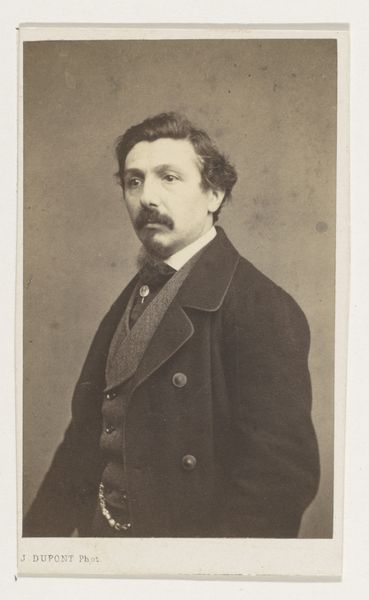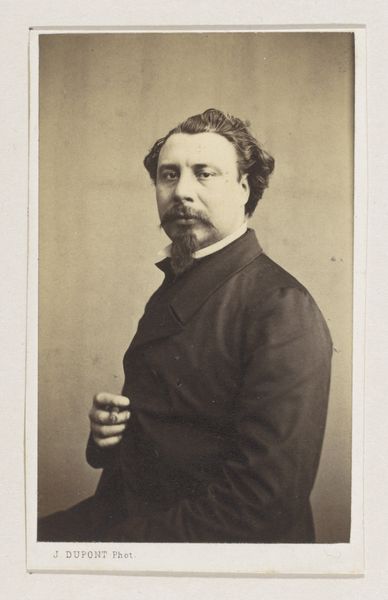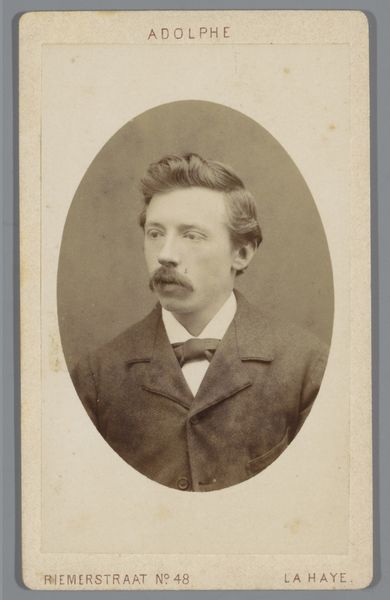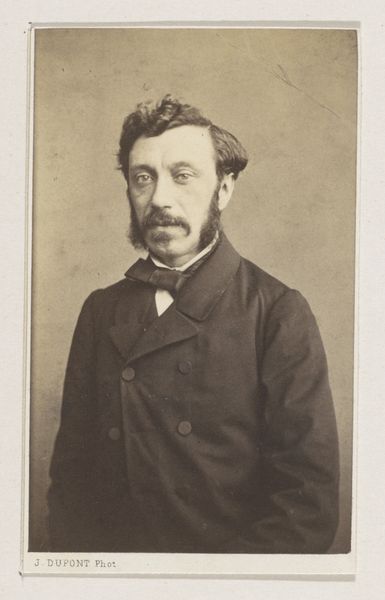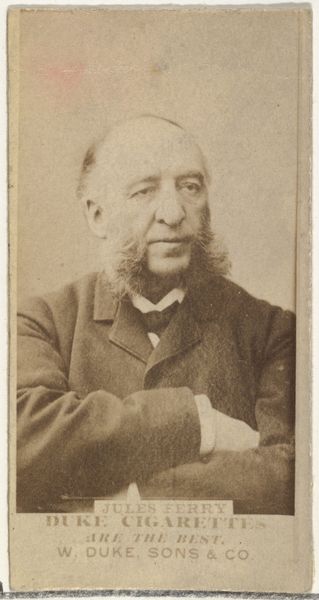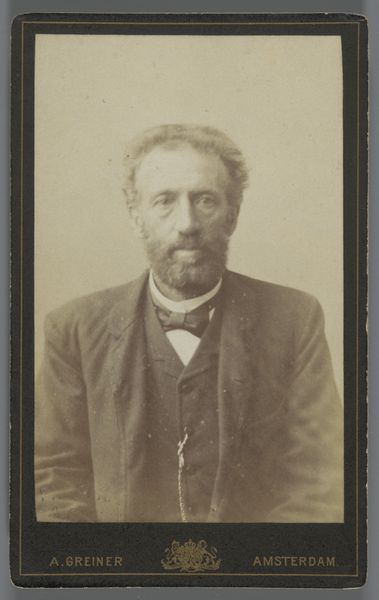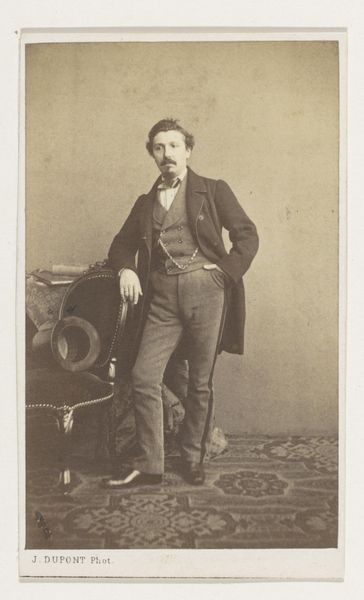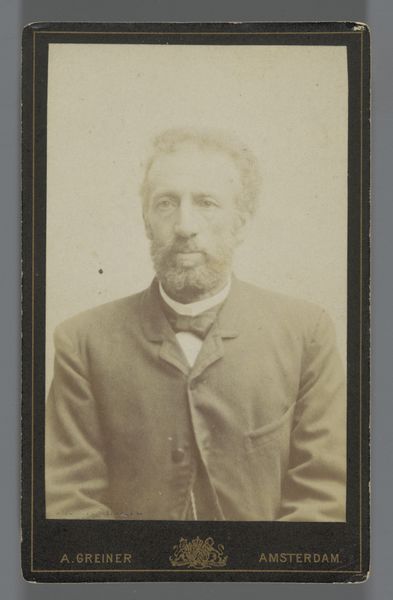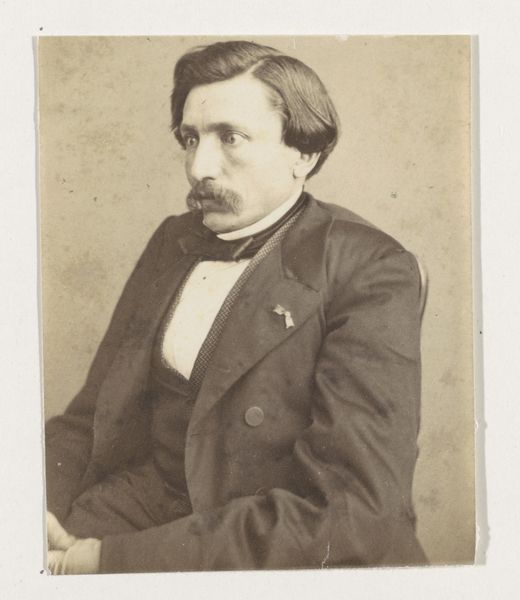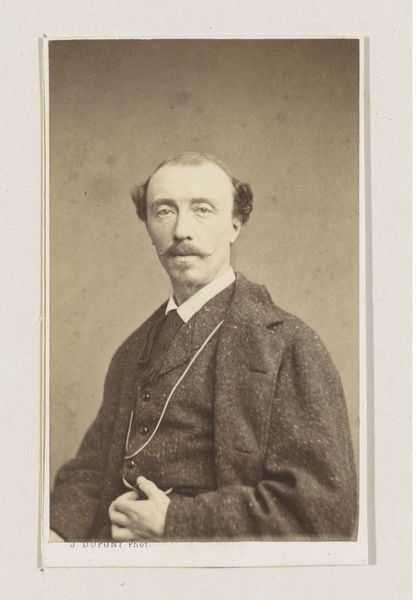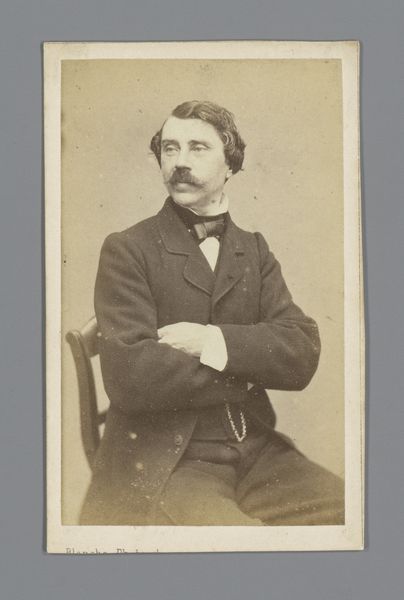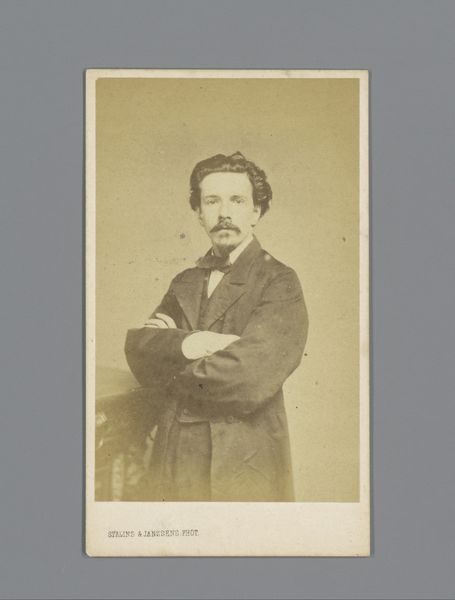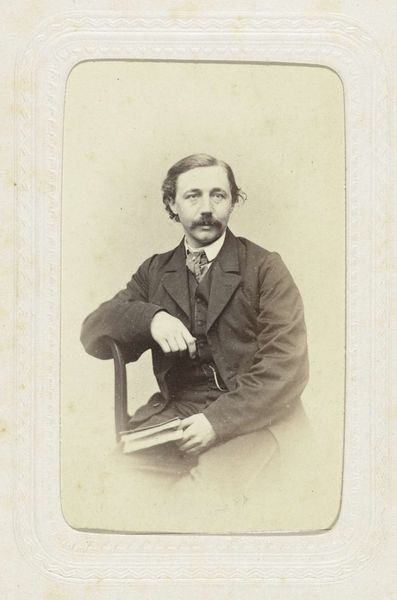
photography, gelatin-silver-print
#
portrait
#
16_19th-century
#
photography
#
gelatin-silver-print
Dimensions: height 102 mm, width 62 mm
Copyright: Rijks Museum: Open Domain
Curator: Looking at this photograph, "Portret van de schilder Jacob Jacobs, halffiguur", dating back to 1861, what are your initial impressions? Editor: There's a tangible melancholia emanating from this gelatin silver print. The somber tonality, almost sepia-like, alongside the sitter's reserved gaze, crafts a mood that's quite contemplative. Curator: The artist, Joseph Dupont, has certainly captured something profound. Consider the visual weight carried in that simple portrait. Photography at this time was increasingly employed as a medium for commemorating individuals but also to communicate respectability through the careful staging and props visible here. Editor: Precisely, his three-piece suit—the patterned vest under his dark coat and a carefully knotted bow tie, hints at bourgeois dignity. The small chain that we can glimpse as well, these add texture to our visual reading. Dupont plays on this, creating areas of contrast in the mid-tones and light in order to guide our sight and ensure a visually well balanced image. Curator: Beyond status symbols, those accoutrements communicate a great deal about his identity. A painter presented in a certain light in his epoch may express the complex social realities of artistic profession during the mid 19th century. It signifies the importance of recognition, and belonging to professional circles within social hierarchies. Editor: So the trappings become signifiers. What seems like straightforward representation also speaks to the coded visual language through which identities were curated in photographic portraits. Dupont does this brilliantly; his treatment of the subject goes beyond surface-level realism. Curator: Indeed, that's a crucial perspective. It offers not just a glimpse of Jacob Jacobs as an artist, but reflects the values attributed to such a persona at the time. Looking beyond his likeness we are exposed to aspirations of the professional middle class of 19th century Europe. Editor: Considering all of that allows for deeper insights and makes the picture, viewed anew, extremely suggestive in many respects.
Comments
No comments
Be the first to comment and join the conversation on the ultimate creative platform.
